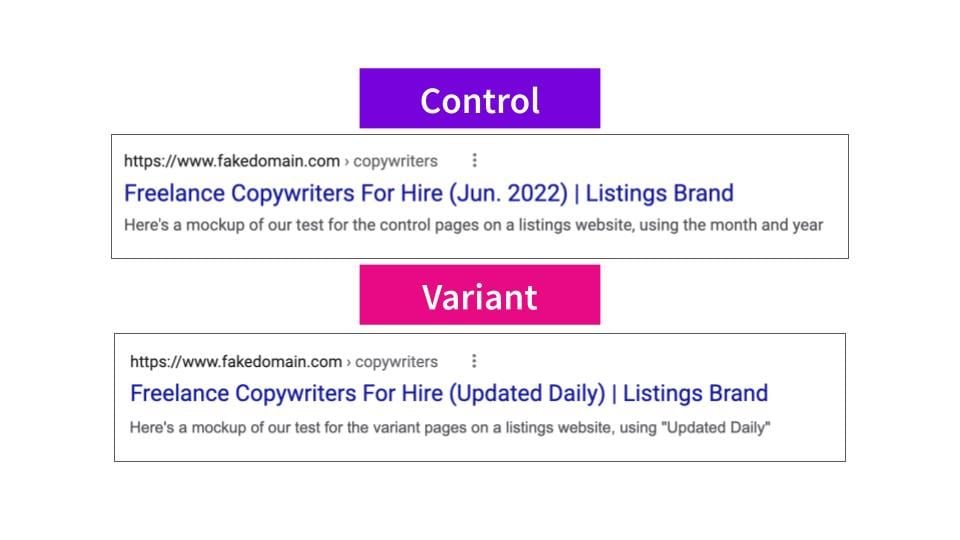Start here: how our SEO split tests work
If you aren't familiar with the fundamentals of how we run controlled SEO experiments that form the basis of all our case studies, then you might find it useful to start by reading the explanation at the end of this article before digesting the details of the case study below. If you'd like to get a new case study by email every two weeks, just enter your email address here.
In this week’s #SPQuiz, we asked our followers what they thought the impact on organic traffic was when we replaced the current month and year to “Updated Daily” on a listings website.
These were the results of the poll:

Our followers this week were evenly split between positive and no detectable impact. Nearly a third of respondents thought it would be negative. Those who thought it would be positive were correct! This change improved organic traffic.
You can read the full case study below.
The Case Study
We’ve spoken before about the importance of testing title tags, even though Google now rewrites them at scale. The first SEO tests we typically recommend our customers to run are title tag tests; they are low effort to implement and our most consistently statistically significant tests. They’re a common source of low-hanging fruit, and the increased frequency at which Google rewrites them hasn’t changed that. Although it’s important to note that they can be unpredictable, swinging high in both the positive and negative directions. That’s why testing title tag changes, rather than just rolling them out, is very important.
One title tag test we recently ran was with a customer in the listings space on their search results pages. We know that both organic users and search engines respond well to signals of freshness. A common way to indicate the freshness of a page is adding the current month and year to the title tags, as our customer did.
However, our customer actually updates their listings more frequently than once a month - they update them daily. We wanted to test if replacing the month and year in the title tag with “Updated Daily” instead would improve organic traffic by displaying on the SERP how frequently their results are updating.
Google did respect the change and display it in the SERP but not universally. We found some variant examples that had been crawled during the test but still had the current month and year still displayed in the SERP.
Here is a comparison of control vs variant:

The chart below shows the impact of this test on organic sessions for the search results pages:

Replacing the month and year in the title tags with “Updated Daily” resulted in an 11% uplift in organic traffic! This test shows that optimising your title tags is still worthwhile and how big an opportunity testing changes to your title tags can be.
When running an A/B testing program, it’s easy to get caught up in the big exciting changes. Sometimes though, it’s the small changes that are the big wins. Particularly with title tags - the resources required to build the test and implement the change are relatively small, making the net gain that much higher.
To receive more insights from our testing, sign up for our case study mailing list, and please get in touch if you want to learn more about this test or our split-testing platform.
How our SEO split tests work
The most important thing to know is that our case studies are based on controlled experiments with control and variant pages:
- By detecting changes in performance of the variant pages compared to the control, we know that the measured effect was not caused by seasonality, sitewide changes, Google algorithm updates, competitor changes, or any other external impact.
- The statistical analysis compares the actual outcome to a forecast, and comes with a confidence interval so we know how certain we are the effect is real.
- We measure the impact on organic traffic in order to capture changes to rankings and/or changes to clickthrough rate (more here).
Read more about how SEO A/B testing works or get a demo of the SearchPilot platform.


